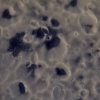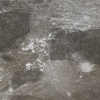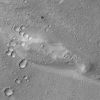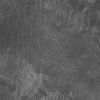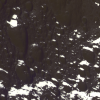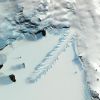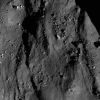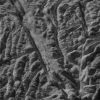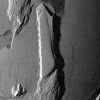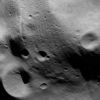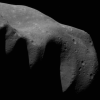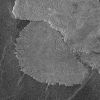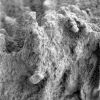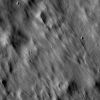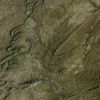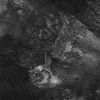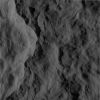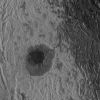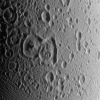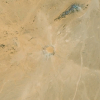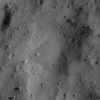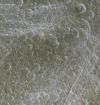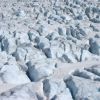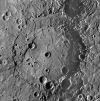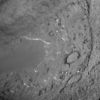Emily Lakdawalla • Dec 15, 2010
Door 15 in the 2010 advent calendar
Time to open the fifteenth door in the advent calendar. Until the New Year, I'll be opening a door onto a different landscape from somewhere in the solar system. Where in the solar system is this cratered world?
With a view that shows this much of the body of this solar system object, you'd expect it to be quite recognizable. But I certainly wouldn't have identified this image correctly. It's a photo of asteroid (243) Ida, captured by Galileo on August 28, 1993. Ida is 56 by 24 by 21 kilometers in diameter. Pretty much the only photos of Ida that ever get posted are Galileo's global views, like the one included in my asteroid and comet montage. If you compare this image to that one you can see how it's just a bit of Ida's nose. This is a single frame from Galileo and is a good example of how unfamiliar things can become when you get closer to them.
In terms of what's visible in the image, the cratered plains look surprisingly lunar to me, and they are ancient; the age is estimated to be older than a billion years. Ida is big enough that ejecta tossed out of impact craters eventually re-accretes on the asteroid, making a deep regolith, which is responsible for that soft, lunar-like appearance. ("Regolith" is a geologic term for a layer of loose, broken rock and gravel that overlies solid rock; it's the term used for the Moon where you might use "soil" on Earth. "Soil" implies an organic origin.) But then there are Phobos-like grooves, or at least hints of them, and glimpses of what must be huge ejecta blocks lying around on the surface.
For those of you who have access to Icarus (few of you, I know), the key paper on Ida appears to be this one, Belton et al. 1996. (Even if you don't have access to Icarus, you can at least read the abstract.)
The Planetary Society Blog 2010 Advent Calendar
Support our core enterprises
Your support powers our mission to explore worlds, find life, and defend Earth. You make all the difference when you make a gift. Give today!
Donate

 Explore Worlds
Explore Worlds Find Life
Find Life Defend Earth
Defend Earth



